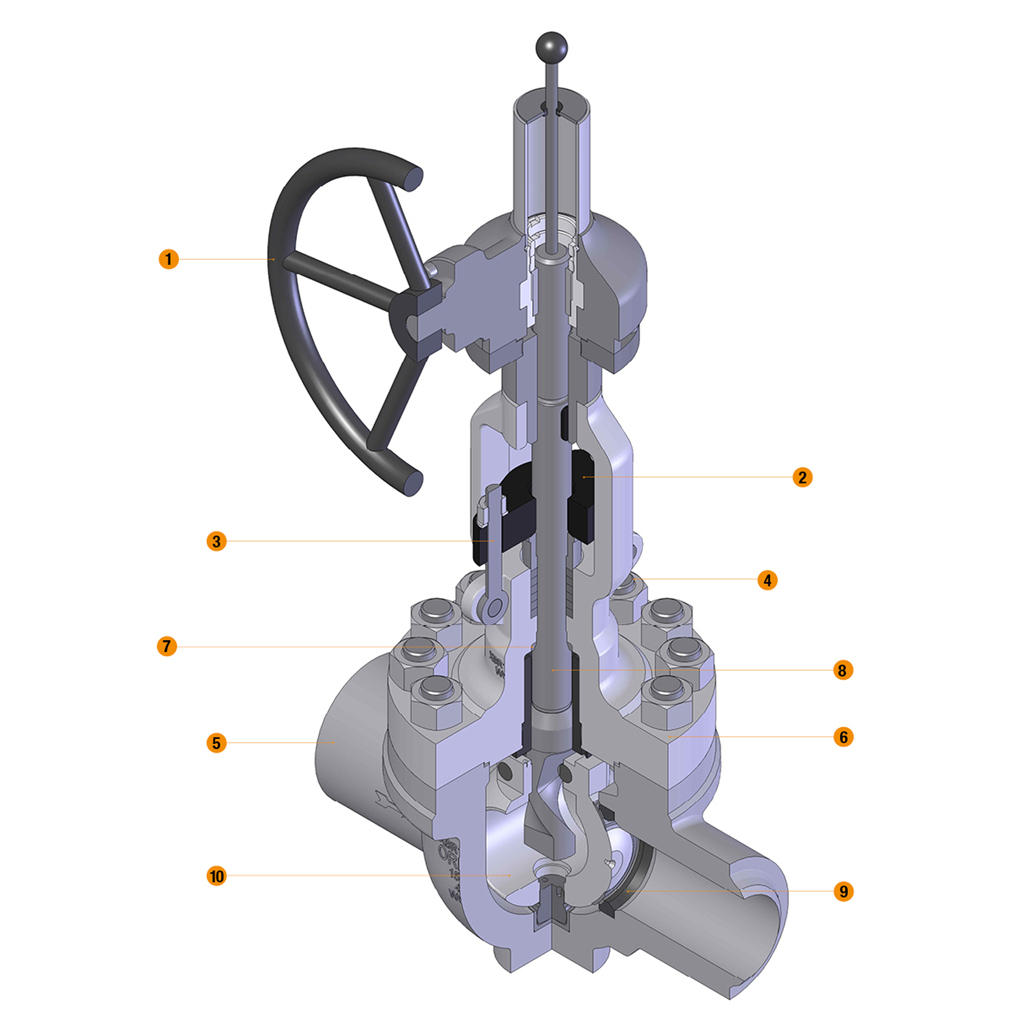Rising Stem Ball Valves
RSBV
CAST OR FORGED STEEL BODY, OUTSIDE SCREW AND YOKE, RISING STEM, NON RISING OPERATOR, RENEWABLE SEATS, REMOVABLE YOKE SLEEVE, BACKSEAT FOR REPACKING UNDER PRESSURE.
Description
OPERATOR
From manual to electric the valve can be supplied in many actuations options.
GLAN AND FLANGE
They are in cast and forged steel and are as standard supplied in two pieces, self aligning design to permit the gland to descend parallel to the stem even if the eyebolts are unevenly tightened.
GLAND BOLTS AND NUTS
The forged steel gland bolts are of the eyebolt type which can be swung outward for ease of gland repacking. They are fixed to the bonnet by hinge pins.
BONNET BOLTING
Bonnet studs and nuts are manufactured from alloy steel to the relevant ASTM standard. The body to bonnet connection is designed according to ASME VIII DIV 1 standard.
BODY
The body is in carbon or stainless steel and is available in many CRA. it is carefully designed for total reliability and simple maintenance. the basic dimension, i.e wall thickness, face to face and flanges comply with the relevant API and ASME standards. The Body-to-bonnet flange is circular, except in the class 150 where it is oval. The body-to-bonnet joint are flat face on class 150 valves, male-and-female on class 300 and ring joint on class 600 and above. The body is basically supplied with renewable seats. Bosses are provided for drain taps or by-pass piping. The internal surfaces in contact with the fluid can be fully lined or cladded for improved corrosion or erosion resistance
BONNET
As the body, the bonnet is in carbon or stainless steel and is available in many other CRA. It is machined to accept yoke sleeve and incorporates a stuffing box sized in accordance with the BS standard. Lifting lugs can be provided integrally cast on the bonnet surface.
BONNET BUSHING
The bonnet bushing or backseat is part of the valve trim. Its design allows valve repacking without valve’s bleeding or draining. Hardfacing can be provided on stem seating surface.
STEM
The peculiar shape of the stem is the evolution of the rising stem ball valve from its traditional design used by other manufacturers. The top of the helix is designed with a flat surface that wedges the ball against the seat. The valve is therefore torque-seated, ensuring a high tightness, independently by differential pressure. The stem of Orion's RSBV makes only a small axial movement when opened and closed. The stem is always balanced NO stem rotation occurs in combination with axial movement when opening and closing, giving in this way better performance in terms of material wear and fugitive emission, the travel is optimized to the minimum in order to fit smaller & reduce cycling time.
SEAT RINGS
Welded-in seat rings are supplied as standard. The rings are part of the trim of the valve. They can be externally threaded and internally notched for easy installation and dismantling or alternatively with press-fit design for easy replacement. Special attention is given to the seating surfaces which are ground and lapped for a tight seal.
BALL
The Particular spherical closure is rotating around a lower trunnion and the stem outer diameter. The ball during opening and closing operations do not contacts the seat. Only when in full close position it is wedged against the seat for effective sealing of the valve. The circular oepning allows a trough conduit design for minimal pressure losses when fully opened, the seating surface of the ball can be hard surfaced in base of any particular need.




